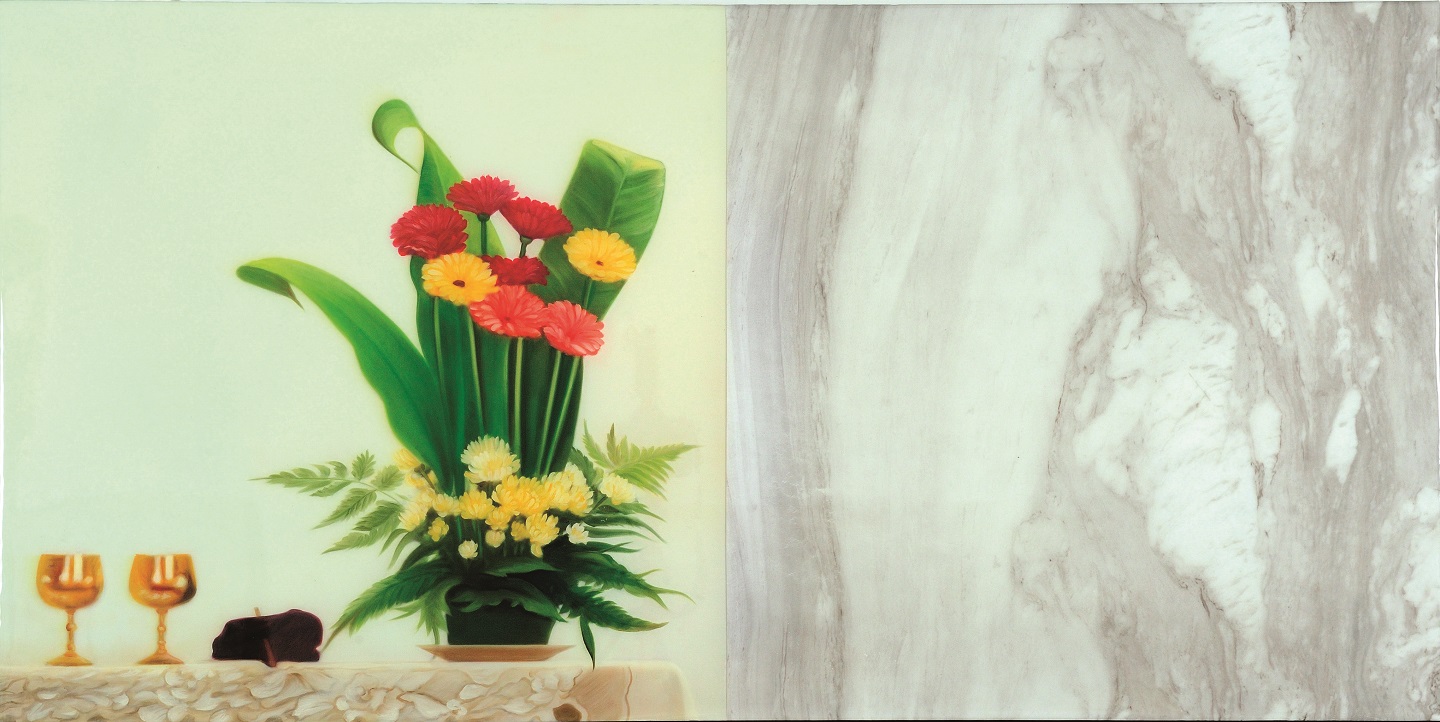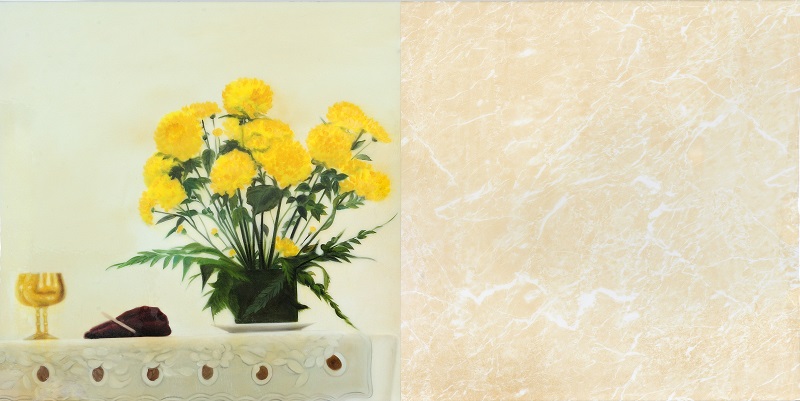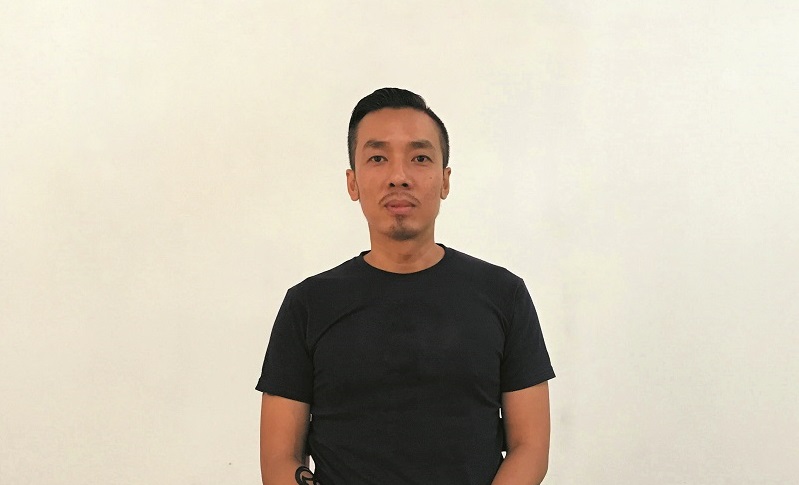
Ivan Lam's mother named this artwork Just for You (All photos: Wei-Ling Contemporary)
A year after his last exhibition, Hymen, visual artist Ivan Lam is still navigating what could be described as sort of an artistic mid-life crisis. In his last conceptual series, he completely “de-skilled” himself in the creative process by just dripping paint through layered nets. This time — with his latest exhibition titled Faux — he goes back to the fundamentals of Western oil painting.
Focusing only on using his hands, Lam produced nine works featuring still-life paintings of altar flower offerings created by his mother. “She makes them for church every Sunday. And then my sister takes a picture with her mobile phone and sends it to the family group chat. I saved them all, thinking that one day I would do something with them, and that one day came five years ago,” says Lam.
The works are still about erasing himself from the equation, but the difference is that instead of creating art without using his skill, Lam has placed himself in the position of a creative “workhorse”, focusing on the artist’s hands as a labourer while relinquishing the injection of intent and interpretation.

The idea, and this season of soul searching, were sparked by the book Death of the Artist by Nicola McCartney. It stirred questions in Lam’s mind about surrendering the ego, on the artist’s influence on their work and how much they have, and on the creator and the created.
“As artists, we always want to have full control of our works, to say something, to manipulate. I tried to avoid that, that is why I painted the floral arrangements exactly as is, in still life. It was so difficult at first,” he laughs, “so un-Ivan Lam-like, but it was a way for me to just be another cog in the machinery … that is one reason I painted these images, as a way of collaborating with my mother and my sister.”
Lam took his mother to the studio when he had finished painting the images over 18 months and showed them to her. “I asked her if she could do me the honour of naming them, since I did not know how or why she arranged them in that way. She took it very seriously and all the names are from her heart, honest, no jargon or trying to be smart and I appreciated it.”
The names of the artworks include Always Waiting, Be Thankful, Looking Up to You, Just for You, Depending on You, At Your Good Service, Tempus Fugit (Time Flies), Inspirations and Dedication.

Even without knowing the names, those well-versed with the oeuvre of Ivan Lam, contemporary artist, would find the works intriguing and unfamiliar when they look at Faux. But then again, this is the artist who says he told his gallerist, Lim Wei-Ling, to get rid of him and his works if he ever starts to get repetitive.
“It is my biggest fear,” admits Lam. He has always been fearful of getting stale and having nothing new to say as an artist, he says. His solution — perhaps as a coping mechanism, he concedes — was to begin to explore the idea of taking himself out of the equation. “You can then take on anything and be anybody else and just play the role of another person in the creative process. It is challenging to hold back the ‘I’, but it is also refreshing and different.”
That idea of an alter ego of himself resonates with the concept of Faux. In fact, for the opening of the exhibition, he sent an actor in his stead, who became Ivan Lam for the evening and explained the works to the media and guests.
In a world where we see what we want to see, or show what we want to show, Lam’s painted flowers juxtaposed with images of marble on the same canvas resonate more strongly on second look. While they look realistic, the marble slabs are not real. They are created using an immersion technique known as hydro paint. He does not hide this fact, revealing the truth on the sides of the unframed canvas. Yet, one cannot deny that the image of the marble is visually very real, and placed side by side with the paintings of altar flowers, create a conversation about different realities.

Both are false in their own ways — the impermanent flowers are forever immortalised and the strong, lasting marble is in fact a mere illusion — yet, the image that stares back at the viewer evokes a version of truth, of depth, of feelings like warmth and coldness with perceptions of hardness and softness.
As for meaning, Lam insists the works were created precisely to allow anyone’s perspective and meaning to be attributed to them. Personally, he says he still harbours so many questions, adding that there are many more issues for him to explore.
One is, perhaps, spirituality and faith, albeit subconsciously. In the exhibition notes, he alludes to Plato and Aristotle, who had said that art is a reflection of nature, and therefore a “mimesis — an attempt to imitate or reproduce reality”.
In the reproduced images of an act of worship and patterns of natural creation, the question of the creator within a created world remains paramount to Lam, and is something we can most definitely look forward to in future works, as there is the promise that Lam’s conversation is just starting.
Wei-Ling Contemporary, 6th Floor, The Gardens Mall, KL. Until April 2. Tues-Sat, 11am to 7pm. See more here.
This article first appeared on Mar 11, 2019 in The Edge Malaysia.


